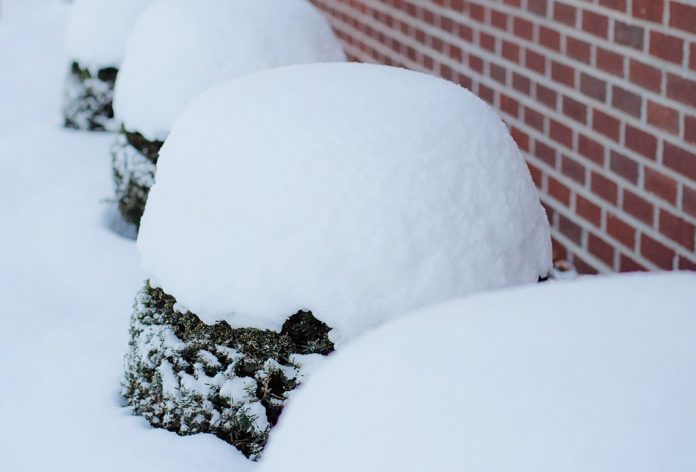Weighed down by snow and ice, trees and shrubs are susceptible to damage in the winter. Can damage be prevented or at least minimized? Are your plants better off if the ice is removed or left alone?
There isn’t one clear-cut answer to preventing damage to trees and shrubs during the winter; however, there are things you can do to minimize it, depending on the circumstances.
Don’t remove snow
Generally speaking, snow and ice-covered branches are better left alone. Snow acts like a natural insulator to protect plants from freezing and thawing temperatures and more often than not will not harm the plant. Furthermore, knocking snow and ice off branches can cause even more breakage than if it had been left alone.
When to remove snow
Although it’s almost always better to leave snow alone, there are exceptions to the rule. If the branches of your trees and shrubs are severely bent under the weight of the snow, you may want to consider carefully and gently removing it.
You can remove snow and ice from tree and shrub branches by brushing upward with a broom or lightly pushing limbs upward with a pole. During this process, avoid standing underneath tall shrubs and small trees. Never shake your shrubs or trees to loosen snow and ice because it can potentially cause more damage to the plant and make removal more dangerous for you.
Additional winter maintenance tips
Shoveling and plowing around shrubs. Shrubs are also susceptible to damage under excessive amounts of heavy snow deposited on branches during shoveling or plowing. When snow is piled on shrubs in this way it can get compacted and the weight becomes too much for the branches to bear. They will eventually break under the added stress.
Protecting foundation shrubs. Shrubs placed under areas where snow or ice slides off the roof can be protected using with A-shaped wooden frames.
Protecting upright shrubs. Upright shrubs, such as arborvitae and some junipers, have a tendency to splay outward and lose their shape under the weight of snow. You can support these types of shrubs by tying strips of cloth or twine around them or by tying the leaders together inside the shrub to maintain it shape.
Preventative pruning on large trees. Winter is a good time to inspect trees for dead branches, crossed branches or branches that overhang areas where falling limbs may be a problem. If you notice any broken branches or branches that should be removed, seek professional help to prune any limb that cannot be reached from the ground.
Pruning smaller trees and shrubs. prune broken branches back to the main branch or trunk on smaller trees and shrubs.












